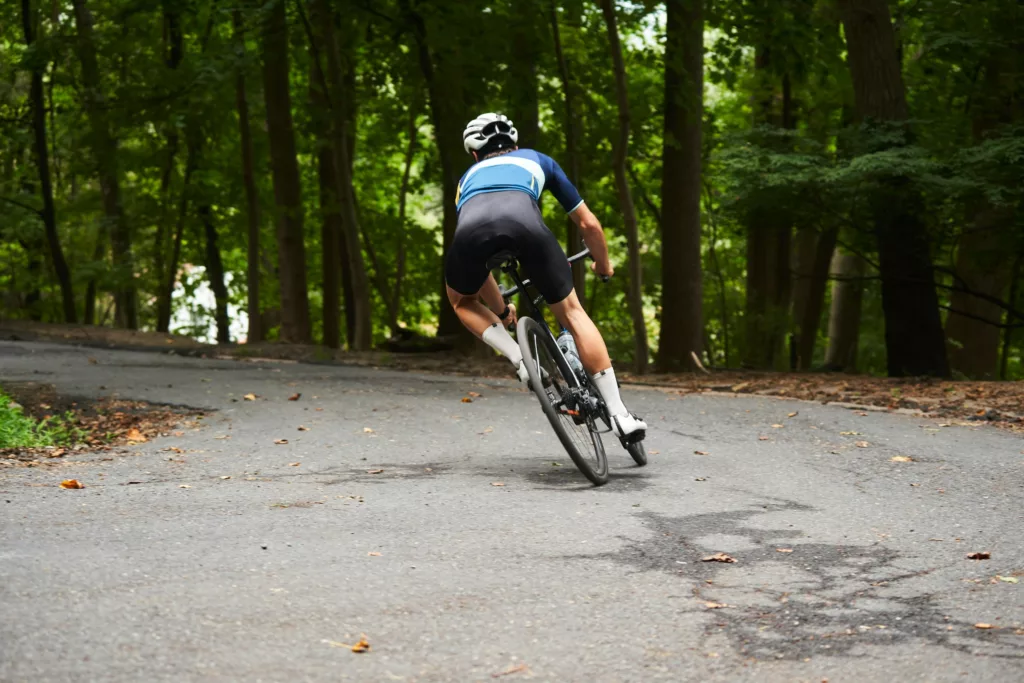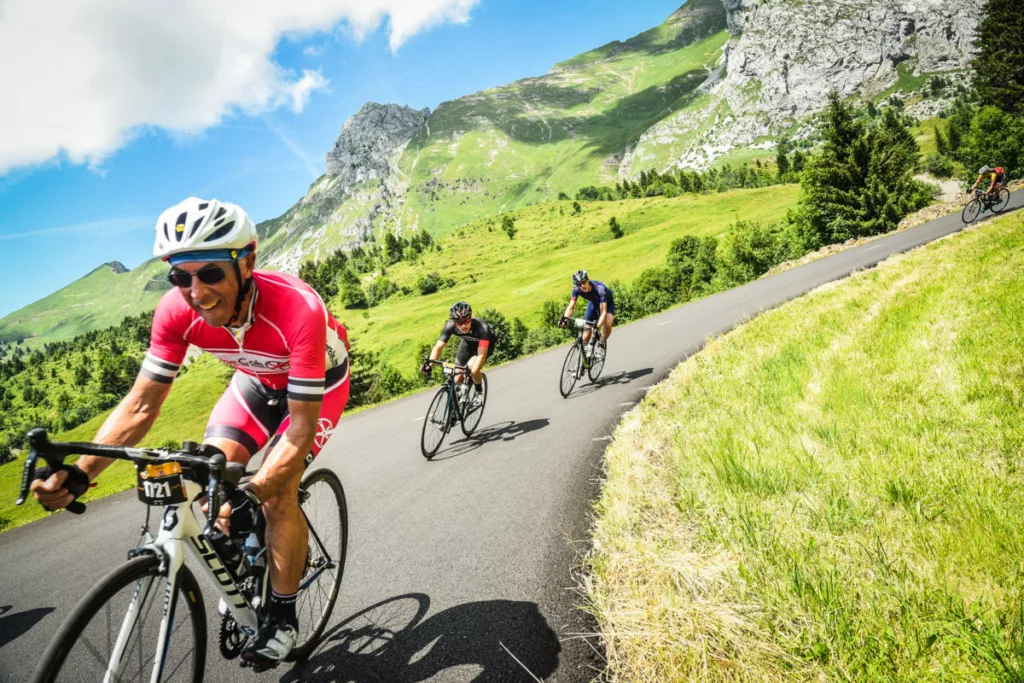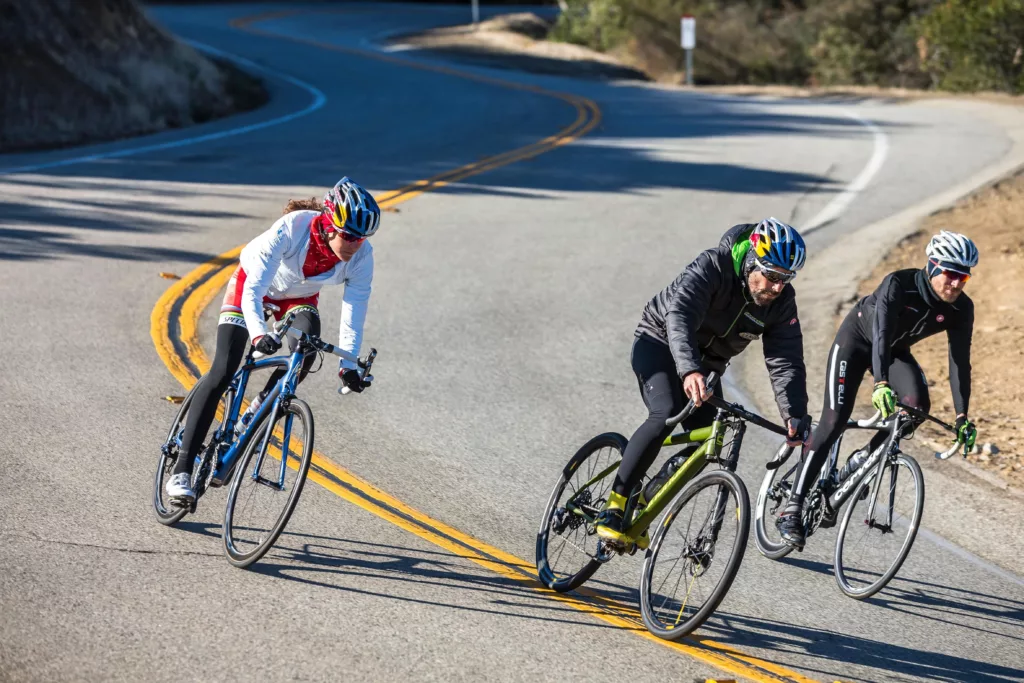Mastering the art of descending is often less emphasised compared to climbing or sprinting skills. However, the ability to descend with confidence and skill is integral to a cyclist’s repertoire, particularly in mountainous terrains where descents can be as challenging as the climbs. Effective descending involves more than just speed; it requires a combination of safety, control, and smoothness. This skill is essential for both competitive racing and leisurely riding, as it involves navigating various types of descents, from tight switchbacks to long, flowing bends. Learning to descend effectively not only gives you a competitive advantage but also enhances the enjoyment and safety of your cycling experience.
Table of Contents
TogglePicking your line
The cornerstone of proficient descending is perfecting your line through corners using the wide-apex-wide technique. This approach involves entering a corner from the far side, relative to the bend’s direction, and exiting at its widest point, effectively creating a straighter line through the turn. This method allows for maintaining higher speeds with less turning. It is crucial to prioritise safety in this process – always ensure that you have a clear line of sight through the corner and remain within your lane, particularly on public roads where conditions can be unpredictable. Remember, the key to smooth cornering is not just about speed; it’s also about the correct entry and exit points, which help in efficiently navigating the turn while keeping safety paramount.

Keep the brakes within easy reach
Ensuring that your brake levers are easily reachable is vital for controlled descending. This check should be part of your pre-ride setup, as easy access to brakes is critical for safe deceleration and stopping. Moreover, being able to comfortably reach your brakes helps in maintaining a relaxed posture while descending. Most modern groupsets offer reach adjustment, enabling you to customise the distance between the handlebars and the brake levers. Ideal adjustment is when you can securely grip the brake levers with at least your index and middle fingers, both in the drops and on the hoods. This adjustment not only contributes to safety but also enhances your confidence and control during high-speed descents.
Time using the brakes safely and effectively
Proper braking technique is essential for effective descending. Ideally, all braking should be completed before you enter a corner. Braking during a turn can cause the bike to straighten and reduce your control, especially at higher speeds. Approach corners at a manageable pace, ensuring you do all necessary braking beforehand. This strategy allows you to smoothly navigate the turn without additional braking. If you find yourself braking mid-corner, it not only disrupts your line but also strains your tyres, increasing the risk of skidding or losing control. Learning to judge your speed and brake effectively before corners is key to mastering descents and improving your overall cycling technique.
Use the drops
Utilising the drops position when descending offers numerous benefits. Riding in the drops lowers your centre of gravity, which stabilises your bike and makes it more responsive. It also allows for greater leverage on the brake levers, enabling more efficient slowing or stopping. Additionally, descending in the drops improves aerodynamics, helping you to descend faster. And importantly, this position ensures a secure grip, reducing the likelihood of your hands slipping off the bars in bumpy or high-speed scenarios. Mastering the use of the drops is crucial for tackling challenging descents and sharp corners, where control and stability are paramount.
Make your body act as an air brake
In addition to mechanical braking, your body can function as an effective air brake. By raising your torso and exposing your chest to the wind, you create additional drag, which helps in slowing down. This technique is particularly useful when combined with traditional braking, as it allows for more controlled deceleration without over-reliance on the brake levers. It’s especially helpful in scenarios where you need to reduce speed quickly but want to avoid abrupt braking that could destabilise your bike.

Look ahead to where you want to go, the bike will follow
The importance of looking ahead cannot be overstated when it comes to descending. Keeping your gaze focused ahead allows you to anticipate upcoming turns, spot potential hazards early, and make timely decisions. This foresight is crucial for navigating descents safely and efficiently. Additionally, avoiding ‘target fixation’ is critical. This phenomenon occurs when a cyclist fixates on an obstacle or hazard, inadvertently steering towards it. By keeping your eyes up and looking through corners, you can better identify the ideal exit path, allowing for a smoother and more controlled descent.
Press on the outside pedal mid-corner
Weight distribution during cornering is another key aspect of successful descending. By pressing down on the outside pedal, which should be in the 6 o’clock position, and leaning into the turn, you increase the downward force on the bike. This action enhances the tyre grip on the road surface, providing more stability and control as you navigate through turns. Proper weight distribution is especially important on wet or slippery surfaces, where maintaining grip is crucial for safe cornering.
Remember to practice!
Regular practice is the most effective way to improve your descending skills. Just as you might target specific climbs or intervals for training, dedicating time to practice descending can significantly enhance your abilities. Choose routes that include varied descents or repeatedly practice certain downhill sections to familiarise yourself with your bike’s handling characteristics and optimal cornering techniques.






